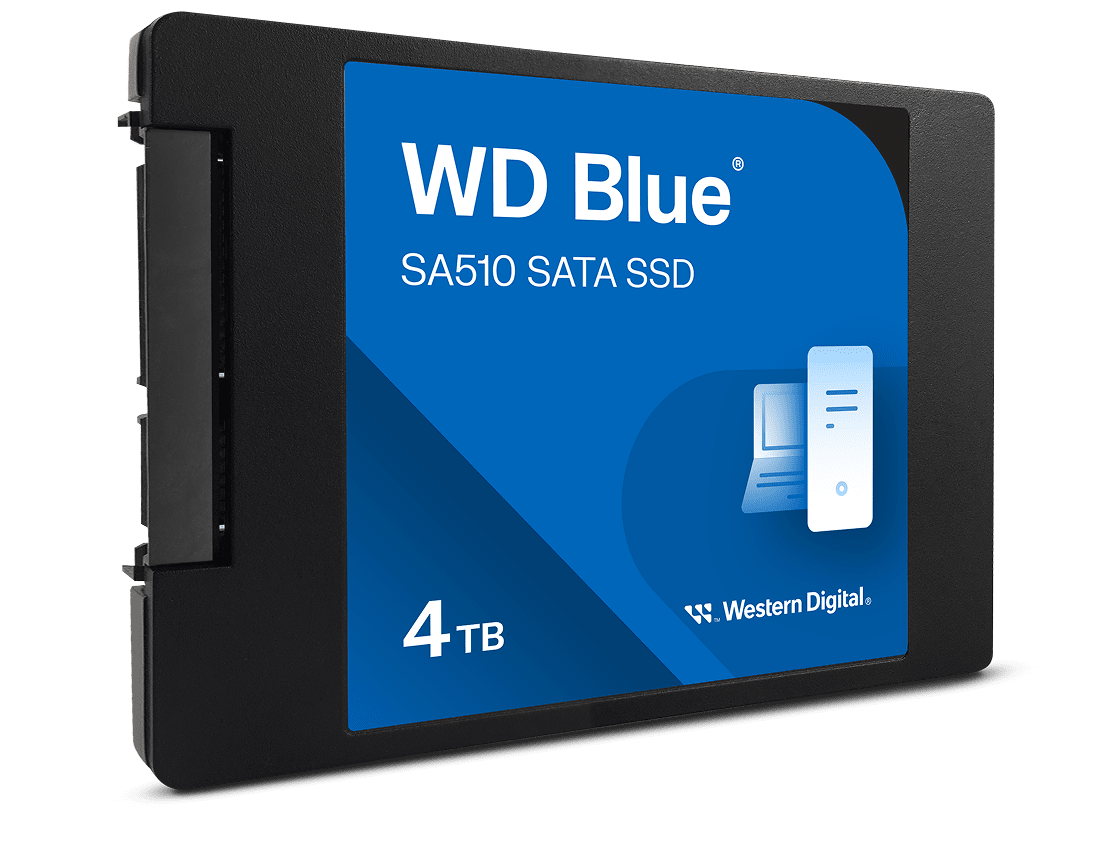Boost Desktop Performance by Switching to a SATA SSD
Want to upgrade your boot drive for your desktop PC, but don’t know how? Follow these simple steps to upgrade your desktop’s 3.5” hard disk boot drive to an ultra-fast, 2.5” SATA solid state drive to give your PC a boost in speed and capacity.
Materials Needed
- Sandisk 2.5" SATA SSD
- Crosshead screwdriver
- SATA cable (if not included with the SSD)
- Mounting bracket (if needed, to fit the SSD into a 3.5” drive slot)
- External USB to SATA III adapter
Recommended Software
- Acronis® True Image™ for Sandisk – Free Download
- Sandisk Dashboard app – Free Download
Why Use a 2.5” SATA SSD for Your Desktop Boot Drive
High-Speed Performance
SSDs can boot your system in 10–20 seconds, while HDDs can take 1–2 minutes. Applications launch almost instantly, and you can run multiple programs (e.g., a browser, music player, applications, etc.) and transfer large files without the system slowing down. It will feel like an entirely new machine.
Reliability and Durability
Because they have no moving parts, 2.5” SATA SSDs are less likely to fail due to shock, drops, or general wear and tear. Especially for consumer use, SSDs typically last longer than HDDs under normal conditions.
Quieter, Cooler, and More Efficient
SSDs make no sound, unlike the spinning platters and moving read/write heads of HDDs. They also consume less power and generate less heat, which helps with cooling, especially when running demanding programs.
Step-by-Step Guide to Upgrade Your Desktop to a 2.5” SATA SSD
Follow along below or watch the video.
Before You Begin
Check SSD Compatibility with Your System
If you're not sure, go to Sandisk Support to understand what SSD options are available to you.
Back Up Your Data
It's important to back up your data before upgrading your desktop. You can use a Sandisk external SSD to create a backup of your data.
Download the Recommended Software
The recommended software will help streamline the SSD upgrade process.
Determine the Number of Drive Bays
Have a single drive bay?
Continue to Path A.
Have multiple drive bays?
Continue to Path B
Path A: Steps for Upgrading to an SSD When You Have a Single Drive Bay
You have now upgraded your desktop with a Sandisk 2.5” SATA SSD.
For more helpful tips, visit: Sandisk.com/Support.
Path B: Steps for Upgrading to an SSD When You Have Multiple Drive Bays
Optional: Steps for Removing Your Old HDD
Or you can keep your HDD as secondary storage.
You have now upgraded your desktop with a Sandisk 2.5” SATA SSD.
For more helpful tips, visit: Sandisk.com/Support.
Related Content
Disclosures
Sandisk and the Sandisk logo are registered trademarks or trademarks of Sandisk Corporation or its affiliates in the US and/or other countries. Western Digital is a registered trademark or trademark of Western Digital Corporation or its affiliates in the U.S. and/or other countries. Acronis and True Image are registered trademarks of Acronis International GmbH in the United States and other countries. The NVMe word mark is a trademark of NVM Express, Inc. All other marks are the property of their respective owners.
Product specifications subject to change without notice. Pictures shown may vary from actual products.
